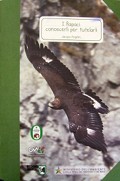I Rapaci: conoscerli per tutelarli
The Latin term "raptare" means to grip, to grab. Birds of prey have curved beaks and talons. In many cases, they are at the top of the food chain in the terrestrial ecosystems and represent the most advanced beings that evolution, through the process of natural selection, have been able to create in millions of years. Their main role is to select and manage the populations of preys, eliminating the youngest, oldest, and sick specimens, leading to the reproduction of the strongest specimens that can better adapt themselves to the environment and that will hand down their genetic heritage to the future generations. If man destroys such important natural regulators, there will be consequences like biological imbalances causing pestilences and population increases of the prey populations (like among mammals, reptiles, and birds) that can damage the existing flora. The presence of a good population of birds of prey in a specific environment means that there is a good balance in the food networks and that the ecosystem, in its different trophic levels, is rich and diversified.
This short but detailed didactic volume describes birds of prey, analyzing in particular the species living in the territory of Gola della Rossa e di Frasassi Park.
This short but detailed didactic volume describes birds of prey, analyzing in particular the species living in the territory of Gola della Rossa e di Frasassi Park.
- Author/s: Jacopo Angelini
- Publisher: Ente Parco Naturale della Gola della Rossa e di Frasassi e Comunità Montana dell'Esino-Frasassi, WWF Italia
- Pages: 33
- Size: 17x23cm
Notes: Color illustrations: Lorenzo Starnini
Black and white illustrations: Grazia Cocco
Photos: Jacopo Angelini
Year:
2000 - 1st ed.
2010 - 2nd ed. realized within the project "Conservazione e restocking del Nibbio reale" financed by Parco naturale della Gola della Rossa e di Frasassi with the contribution of the Italian Ministry of the Environment, with Decision CIPE 19/2004.

I Rapaci: conoscerli per tutelarli
© 2024 - Unione Montana dell'Esino Frasassi





